Caviar on a budget: Ring in the New Year by enjoying Sacramento County’s flagship delicacy for less
Caviar? In this economy?
Yes, it’s possible — affordable, even.
Sacramento County produces more than 80% of the United States’ domestic caviar, yet area residents don’t always experience the fruits of that labor as regional producers feed Michelin-starred restaurants around the country. But with a little insider knowledge, Sacramento-area residents can enjoy tastes of locally-produced sturgeon roe for as little as $4.
Here’s how Sacramento County became the nation’s caviar capital, and how to celebrate that delicacy this New Year on a budget.
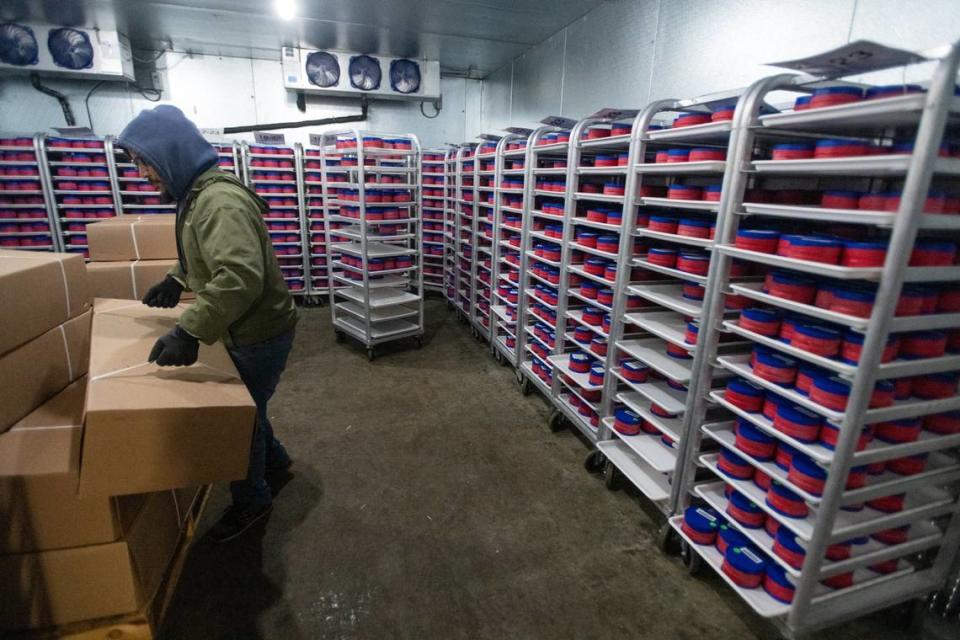
Sacramento County’s caviar history
Caviar, which is the cured roe, or eggs, from sturgeon, was traditionally wild-caught, the product of fishermen traipsing the Caspian and Black seas. Sacramento County’s relative caviar empire began with Serge Doroshov, a Soviet Union aquaculture expert who visited Cuba on a work trip and defected with his family to the United States in 1975.
Doroshov became a UC Davis professor in 1978 and used his position to explore the potential of the sturgeon swimming in the nearby Sacramento-San Joaquin Delta. He began studying white sturgeon reproduction through a federal grant in 1979, spawned wild sturgeon broodstock at UC Davis in 1980 and helped nearby aquaculture farms do the same in 1981.
The world’s first commercial sturgeon farms were off to the races — slowly. White sturgeon are monstrous, Jurassic-era beasts that can grow up to 20 feet long and take six to 10 years to produce roe. Farmers can’t even tell if their fish are male or female until about year four, Tsar Nicoulai president Ali Bolourchi said.
That partially explains caviar’s opulence. Yet the price of caviar has actually remained steady in the face of inflation over the last decade, from $1,500 per kilogram in 2013 to $1,556 this July, according to the Food and Agriculture Organization of the United Nations.
Overfishing led to international bans on wild caviar procurement, and the sturgeon farming industry took off, with Tsar Nicoulai Caviar (Wilton) and Sterling Caviar (Elverta) becoming the two big fish among Sacramento County’s producers.
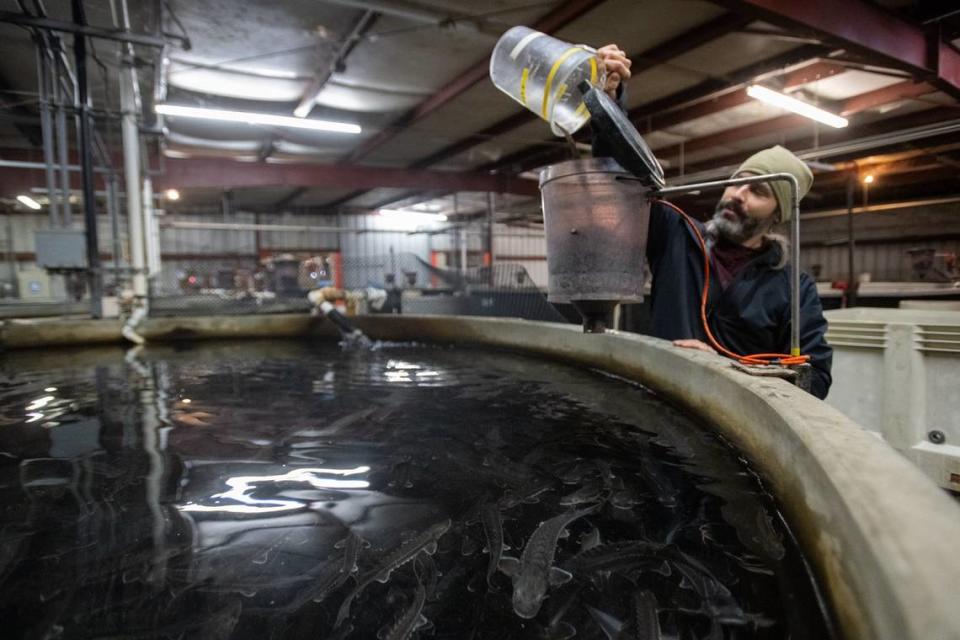
China, in particular, developed a sturgeon farming industry and now produces more than 60% of the world’s caviar, which has flooded the market and driven prices down. Still, Sacramento County deserves credit for pioneering the craft, Sterling Caviar product and quality assurance manager Alan Morris said.
“Now that wild-caught caviar is pretty much nonexistent because of overfishing, almost all of the caviar in the world comes from aquaculture, and that all started here in Sacramento (County),” Morris said. “California is known for making some of the world’s finest caviar, but we’re also the birthplace of where (farmed) caviar comes from, regardless of who’s making it in Europe, Asia or wherever (else) right now.”
How to enjoy
Sterling Caviar’s website recommends a 30- or 50-gram jar of caviar per person if served à la carte, or 15 to 30 grams per person if used as a garnish.
But you can really stretch caviar more than that, Morris said, with two to five people able to get reasonable samples out of a 30-gram jar. Metal spoons ruin caviar’s strong but delicate taste, so mother-of-pearl is the industry standard, though wood or plastic will work in a pinch.
“The thing about caviar is that the flavors are so intense and complex that a tiny little bit the size of your little pinkie fingernail on top of a tiny bit of white toast will kind of envelop everything that is put on with its flavor,” Morris said.
While many caviar aficionados simply eat the eggs plain, using them to top other foods can stretch a jar and create new flavor combinations. Morris recalled someone serving caviar atop white chocolate macadamia nut cookies at this year’s San Diego Bay Wine & Food Festival, resulting in a sweet-salty taste he compared to salted caramel.
The best place to buy Tsar Nicoulai Caviar is ... Costco.
Fifty-gram tins of Tsar Nicoulai’s Estate Caviar, plus blini and a mother-of-pearl-spoon, are currently just $49.99 at the warehouses in Sacramento, Roseville, Rancho Cordova, Citrus Heights and Folsom, along with some Bay Area locations. For comparison, a two-ounce jar (57 grams) is $140 plus shipping if ordered directly from Tsar Nicoulai’s website.
If not enjoying caviar by itself, Bolourchi likes it atop local oysters, on deviled eggs — land egg meets sea egg — or with a small pancake called a blini, particularly those made from buckwheat. While serving caviar on potato chips has become a popular marriage of high- and low-brow in recent years, he prefers another potato variant.
“I think latkes are amazing,” Bolourchi said. “There’s something about the fattiness and crunchiness and how it’s sort of an adult hash brown, if you will, that just goes really well with caviar. There’s something about that starchy element that’s perfect for caviar. It’s like a Jewish delicacy that’s out of this world.”
As for drink pairings, Bolourchi and his wife, Tsar Nicoulai vice president Marai Bolourchi, have a New Year’s Eve tradition dating back a decade. They work all day, put their kids to bed and pop a chilled bottle of Domaine Carneros’ Le Rêve blanc de blancs sparkling wine to go with their Reserve caviar, eaten with a spoon as the year comes to a close.
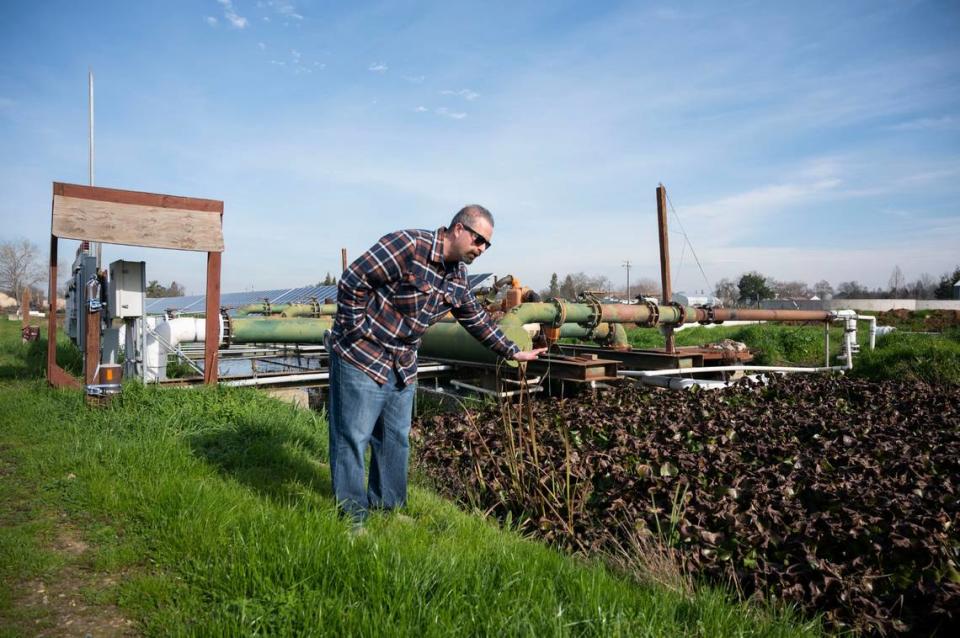
Caviar for $4
Irish Hospitality Group had already established de Vere’s Irish Pub, The Snug and Ro Sham Beaux wine bar when it opened The Butterscotch Den last June at 3406 Broadway. The dark, 1970s-inspired steakhouse and martini bar quickly became a hit in its own right, the hottest place for a drink in Oak Park thanks to two of the best deals in town.
The mirror behind The Butterscotch Den’s bar advertises its $9 freezer martini and complementary $4 caviar “bumps.” Spoonfuls of Sterling’s Royal caviar (normally $92.40 plus shipping for a 30-gram container) are doled out onto the backs of customers’ hands in the triangle between the thumb, wrist and index finger, then slurped up.
“It’s kind of the gateway drug to falling in love with caviar,” co-owner Trevor Easter said.
The Butterscotch Den buys Sterling’s product in bulk, then prices it so low that the bar simply breaks even, with the hope that people will share photos or bring others in for what could be their first taste of caviar. It’s a near-loss leader for the social media age, Easter said.
“We figured that the breakeven would be rationalized by the amount of people who enjoy that experience, want to show their friends (and) bring people in,” Easter said.
The Buttercotch Den sells about 1,000 martinis per month, Easter said, and people order the caviar add-on about 40% to 50% of the time. Customers often enjoy what The Butterscotch Den dubs “a sandwich” — a sip of martini, a bump of caviar, another sip of martini.
But The Butterscotch Den stands out for its central, open grill, which customers use to cook their own steaks and hamburgers. Some patrons will grill a rib-eye, cut off the perfect bite and top it with a $4 caviar bump for a play on “surf and turf.” Others slide dollops of caviar onto loaded baked potatoes, and “industry kids” like throwing it atop off-menu hot dogs, Easter said.
“For four bucks, it’s like, ‘why not?’” Easter said.
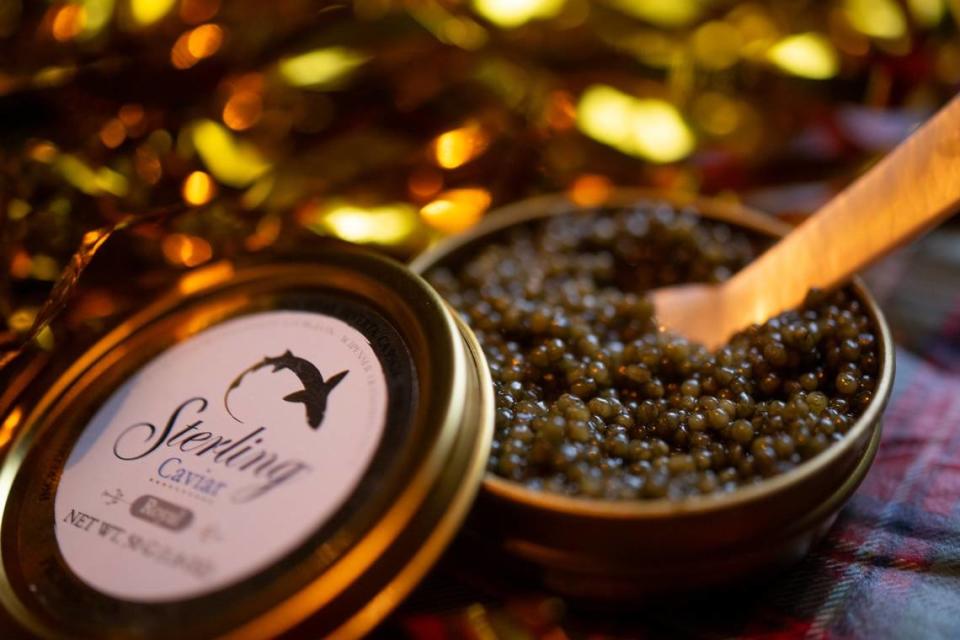
Not all fish eggs are created equal
Not a caviar purist, but still want to enjoy some fish eggs? There are certainly affordable options in local stores — though most are not prepared locally.
Eastern European markets throughout the Sacramento region carry other products labeled as “caviar” for considerably less than top producers. Five dollars at Beryozka European Market in Rosemont, for example, gets customers 6.35 ounces of caviar cream made from capelin caviar (known in Japanese cuisine as masago) mixed with shrimp or smoked salmon and avocado purée.
KP International Market, Rancho Cordova’s supermarket for Asian and Eastern European foods, sells 8 ounces of imitation sturgeon caviar made from fish broth, vegetable oil, butter and thickening agents for $3.99. It also sells tins of cod caviar or that made from Alaskan pollock ($3.99 for 4.59 ounces). Cured sturgeon eggs, however, are nowhere to be found.
At Teremok Grocery Store & Bakery in Old Foothill Farms, plastic containers of salmon roe from Alaska-based Peter Pan Seafood sit by the register for $72 per pound. The bright orange eggs are larger than black caviar, and pop between teeth like a sort of Gusher-of-the-sea. Caviar, meanwhile, tastes more buttery and almost melts in one’s mouth.
“It’s almost an entirely different thing,” Morris said. “Yeah, they’re both fish eggs. But most of the others are sort of a hard shell with a sort of a fishy interior. And the reason that sturgeon is the classic caviar is that it’s just an entirely different product. It’s this rich, creamy, complex cascade of flavors on your palate that really nothing else in the world is quite like.”
Beryozka European Market does sell four-ounce containers of real kaluga caviar for $129, less than the price Sterling charges for that weight of its least expensive caviar. Yet local producers point to their environmental bona fides as well as, they claim, a superior product.
Tsar Nicoulai, for example, keeps its sturgeon in outdoor tanks to mimic the Delta’s natural environment. A new recirculating aquaculture system, or RAS, will allow the Wilton farm to expand from 30 tanks to 54 next year while halving its water use, Bolourchi said.
“It’s not just, ‘hey, farm-to-table because it sounds cool,’” Bolourchi said. “It’s one of those that if you don’t support actual producers, a product comes in from all over the world, not just here where we have a very blessed terroir.”
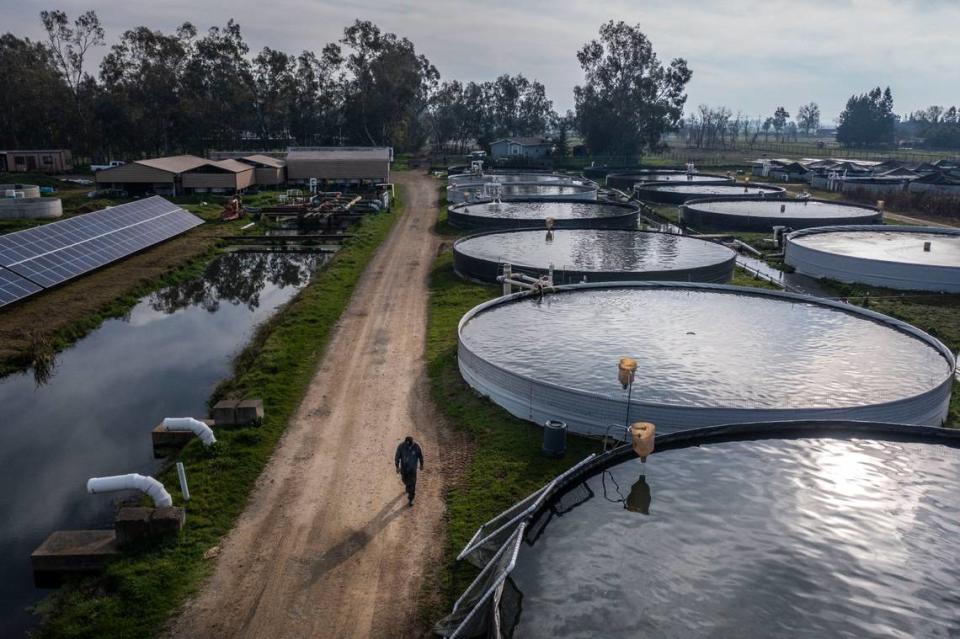
Sacramento Eats: Recipes from the Capital Region’s Favorite Restaurants and Bars
Order your cookbook here to get recipes from 60 of the Sacramento region’s top restaurants and bars, plus photos and descriptions of what makes each business so exceptional.


